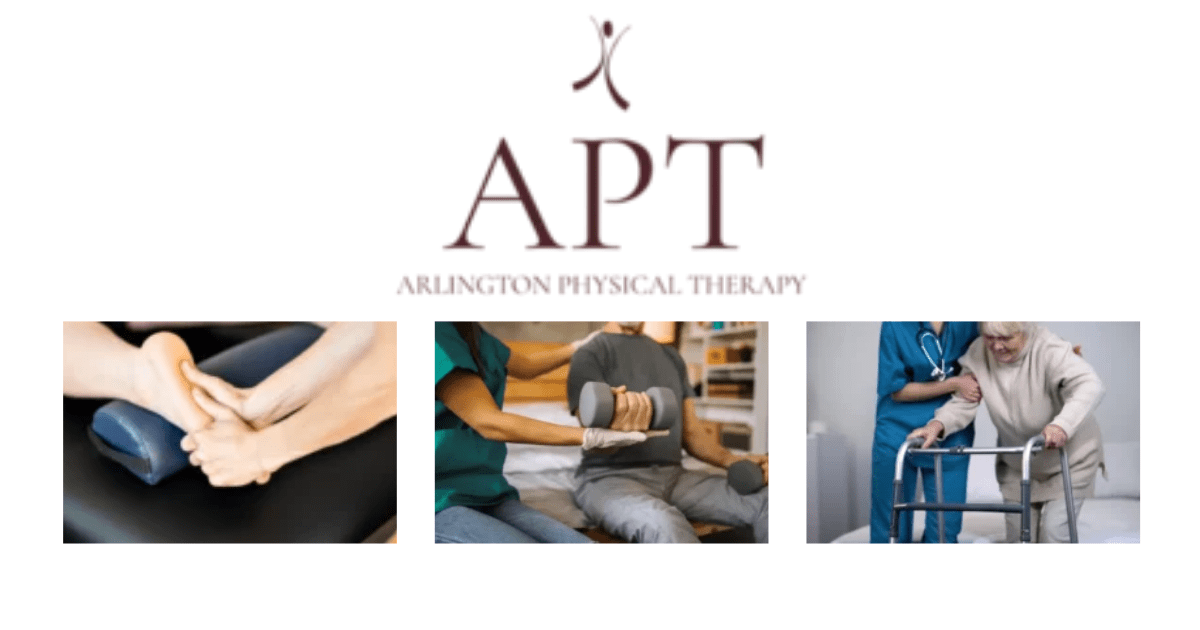Back pain is one of the most common health complaints among adults, affecting people of all ages and activity levels. Whether caused by poor posture, an injury, a medical condition, or daily wear and tear, persistent back pain can interfere with your ability to work, exercise, and enjoy life. Fortunately, effective back pain therapy is available in Arlington, providing lasting relief and restoring mobility.
At Arlington Physical Therapy, we specialize in non-invasive, evidence-based treatments to help patients manage and recover from back pain. In this guide, we’ll explore:
- The causes of back pain and how it affects daily life
- Effective back pain therapy techniques
- The benefits of professional treatment
- Self-care tips to prevent back pain
- Frequently asked questions about back pain therapy
If you’re struggling with chronic or acute back pain, keep reading to discover how you can find relief and regain control of your movement.
Understanding Back Pain: Common Causes and Symptoms
Back pain can develop gradually over time or result from a sudden injury. It can affect different areas of the back, including the upper back (thoracic), lower back (lumbar), and spine.
Common Causes of Back Pain
- Poor Posture – Sitting for long hours, slouching, or using improper lifting techniques can strain the spine.
- Herniated Discs – A bulging or ruptured disc in the spine can press on nerves, causing pain and numbness.
- Muscle Strains – Overuse, heavy lifting, or sudden movements can strain back muscles.
- Sciatica – Compression of the sciatic nerve can cause pain that radiates down the lower back, buttocks, and legs.
- Arthritis – Degenerative conditions like osteoarthritis can cause inflammation and stiffness in the back.
- Spinal Stenosis – Narrowing of the spinal canal can put pressure on the nerves, leading to pain and mobility issues.
- Scoliosis or Spinal Misalignment – Abnormal curvature of the spine can contribute to chronic back pain.
- Stress and Tension – Emotional stress can lead to muscle tightness and tension, worsening back pain.
Symptoms of Back Pain
- Dull, aching pain that worsens with movement
- Sharp or shooting pain in the back or down the legs
- Stiffness and reduced flexibility in the spine
- Tingling or numbness in the lower back and extremities
- Pain that worsens after prolonged sitting or standing
If you experience persistent or severe back pain, seeking professional therapy in Arlington can help you recover and prevent further complications.
Back Pain Therapy: Proven Techniques for Lasting Relief
At Arlington Physical Therapy, we use a variety of safe, non-invasive techniques to help patients recover from back pain. Depending on the cause and severity of your pain, your treatment plan may include:
1. Physical Therapy for Back Pain
Physical therapy is one of the most effective treatments for back pain. A licensed therapist will design a personalized rehabilitation program to:
- Strengthen core and back muscles to support the spine
- Improve flexibility to reduce stiffness and discomfort
- Enhance posture and movement mechanics
- Use manual therapy to relieve tension and promote circulation
Regular physical therapy sessions can reduce pain, restore function, and prevent future injuries.
2. Laser Therapy for Pain and Inflammation
Laser therapy is an advanced treatment that uses light energy to reduce inflammation, improve circulation, and accelerate healing. It is beneficial for:
- Herniated discs and nerve pain
- Sciatica and lower back inflammation
- Muscle strains and ligament injuries
Laser therapy is non-invasive, painless, and highly effective for long-term back pain relief.
3. Spinal Decompression and Traction Therapy
Spinal decompression therapy involves gentle stretching of the spine to relieve pressure on compressed nerves. It is particularly effective for:
- Herniated and bulging discs
- Sciatica and pinched nerves
- Spinal stenosis and chronic lower back pain
Cervical and lumbar traction can help restore proper spinal alignment and relieve tension.
4. Cupping Therapy for Muscle Tension and Pain
Cupping therapy uses suction cups to improve blood flow, relax tight muscles, and reduce inflammation. It is a great option for:
- Chronic lower back pain
- Muscle stiffness and tension
- Athletes recovering from back injuries
5. Posture Correction and Ergonomic Training
Poor posture is one of the leading causes of back pain. Physical therapists provide posture training and ergonomic recommendations to help patients:
- Sit and stand properly to reduce spinal stress
- Modify their workspace for better posture support
- Learn safe lifting techniques to prevent injuries
6. Core Strengthening Exercises
A weak core puts extra strain on the lower back. Physical therapists guide patients through core-strengthening exercises to:
- Support the spine and improve balance
- Reduce pressure on discs and nerves
- Enhance overall movement and stability
Developing strong abdominal and lower back muscles is essential for long-term pain relief and injury prevention.
Self-Care Tips to Prevent Back Pain
In addition to professional therapy, simple lifestyle changes can help manage and prevent back pain:
- Practice good posture – Sit and stand with a straight back and shoulders relaxed.
- Stay active – Engage in regular low-impact exercises like walking or swimming.
- Lift with your legs, not your back – Use proper lifting techniques to avoid strain.
- Stretch daily – Gentle stretches help keep muscles flexible and prevent stiffness.
- Use ergonomic furniture – Invest in a supportive chair and workstation setup.
- Maintain a healthy weight – Excess weight puts additional stress on the spine.
Frequently Asked Questions (FAQs)
1. How long does it take for back pain therapy to work?
The timeframe varies depending on the severity of your condition. Many patients experience relief within a few sessions, but long-term improvement typically requires several weeks of consistent therapy.
2. Can physical therapy completely cure back pain?
For many patients, physical therapy provides significant and lasting relief. While some conditions require ongoing management, most people can achieve pain reduction and improved function with proper treatment.
3. Is back pain therapy covered by insurance?
Yes, most insurance plans, Medicare, and Medicaid cover physical therapy if prescribed by a doctor. Contact your provider or ask our clinic for assistance in verifying your coverage.
4. Can I do back pain therapy at home?
While home exercises can help maintain progress, professional therapy provides personalized treatment and advanced techniques for better results. We encourage a combination of in-clinic therapy and home-based exercises.
5. When should I seek professional back pain treatment?
If your back pain persists for more than two weeks, worsens over time, or interferes with daily activities, it’s time to seek professional therapy in Arlington. Early treatment helps prevent complications and speeds up recovery.
Find Lasting Relief with Back Pain Therapy in Arlington
You don’t have to live with chronic back pain. With the right therapy, exercises, and expert care, you can regain mobility, reduce discomfort, and enjoy life again.
At Arlington Physical Therapy, we provide affordable, effective back pain treatments tailored to your needs. Contact us today to schedule a consultation and start your journey to a pain-free, active life!

